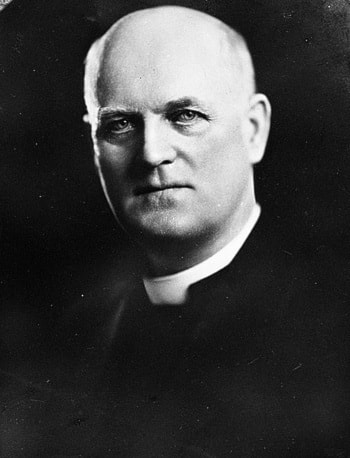Imagine travelling for nearly seven weeks with only enough food and supplies for just eight days.
Freezing, starving, scavenging for food, Bishop Isaac Stringer, now famously known as “the bishop who ate his boots,” was lost in the northern wilderness for 51 days, and lived to tell the tale.
In the fall of 1909, Stringer and C.F. Johnson were travelling between Fort McPherson, Northwest Territories and Dawson City.
“They were in wild country dressed in light clothing and with few provisions,” wrote Isaac’s wife, Sadie Stringer in a story she wrote for Maclean’s magazine in July 1955.
They could not use their canoe as planned, so they had to walk 100 kilometres over a mountain range to get back to civilization.
“Snow began to fall in thick blankets and a wall of fog descended, blotting out the pass through the divide that might lead them back to Fort McPherson and safety,” wrote Sadie. “They made themselves snowshoes of willow boughs and strips of moccasins and plunged blindly into the blizzard. But Isaac knew they were lost.”
Desperate for food they dug beneath the snow for berries. They also managed to capture a ptarmigan and a rabbit for sustenance, but it wasn’t near enough.
Each day the men grew weaker and thinner.
Traditional knowledge of the time said that the skin of an animal that had not been tanned could be eaten and could sustain life, according to the Virtual Museum of Canada exhibition on The Bishop Who Ate His Boots.
Luckily, the two men were wearing their sealskin boots with walrus skin soles.
On October 17, 1909, Isaac wrote that he travelled 24 kilometres through the snow and then toasted his boots for supper.
Encouraged by the success of his dining plan, he called the meal “palatable.”
Over the next few days, he ate more pieces of the boots, boiled and toasted.
His final diary entry of the trip, penned on October 21, 1909, read: “Boot soles and tops. Very tired. Hands sore. Tied up Mr. Johnson’s fingers.”
Days later they found themselves on the Peel River. They bored a hole through the ice to find out which direction the water was flowing. They crossed the river and found sled tracks, and then they heard the sound of dogs barking in the distance.
Overjoyed, they walked into the campsite of friends who hardly recognized the emancipated travellers.
Over the course of their 51-day trip, each man had lost nearly 23 kilograms.
The New York newspapers had reported them dead.
“The newspaper said that both you and I had drowned,” she wrote to her husband at the time, “I knew that I had not, and so I hoped that you had not either.”
At the campsite the pair was given a good meal as they recuperated from the adventure that would make Bishop I.O. Stringer a well-known name in Yukon history.
The youngest of four children, Isaac was born in Ontario and came to the Yukon with Sadie in 1897.
In 1901, the couple was stationed at the Anglican mission on Hershel Island.
Four years later, when Isaac was made Bishop of the Yukon, the couple moved to Whitehorse, then to Dawson in 1907.
He was elected Metropolitan Archbishop of Rupert’s Land in 1931, when they moved to Winnipeg. He remained in that post until his death in 1934.
This column is provided by the MacBride Museum of Yukon History. Each week it will explore a different morsel of Yukon’s modern history. For more information, or to comment on anything in this column e-mail lchalykoff@macbridemuseum.com.
